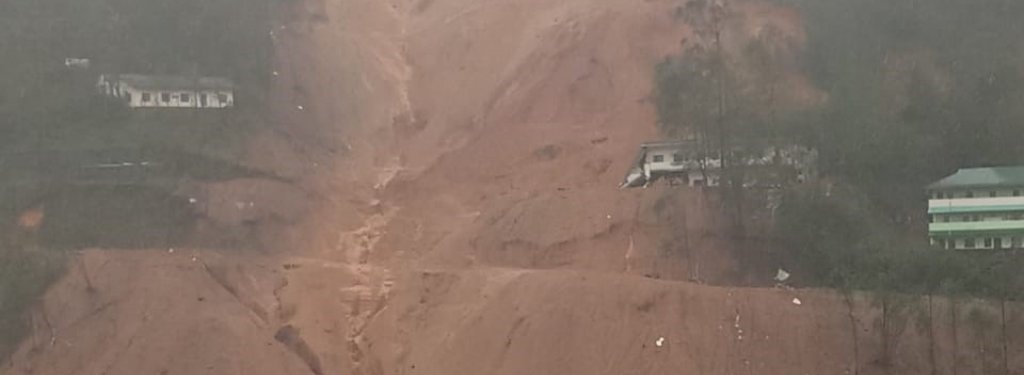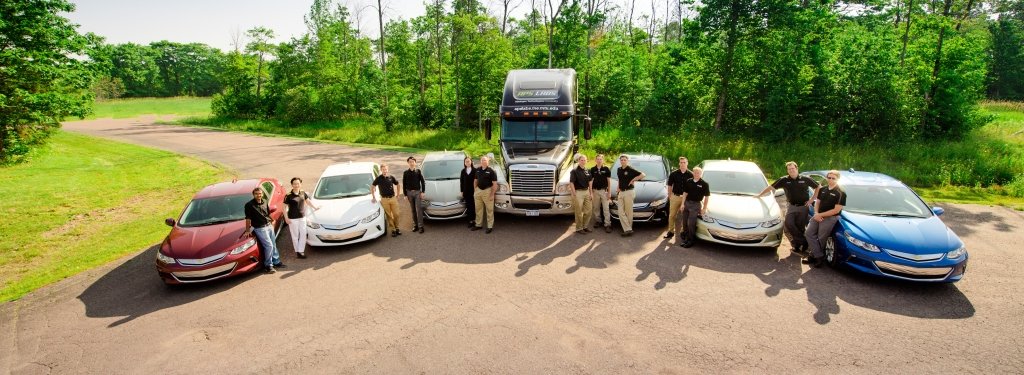Alum's tricked-out toy truck a lifesaver for US troops

Ernest Fessenden and his older brother Christopher followed different paths. Chris enlisted in the army in 1993, right after graduating from Shelby High School. Five years later, Ernie enrolled at Michigan Tech and in short order earned BS and MS degrees in computer science.
All that time, Ernie wanted to do something important to help his brother. Then, in 2007, he got his chance. “My brother had done several combat deployments to the Middle East before, but this time, I actually had a job and could do something besides talk,” says Ernie. “Part of my brother’s job was to conduct vehicle inspections.”
Every day Chris inspected between 20 and 100 dump trucks loaded with rock and gravel before they could pass through an entry point. “We had to crawl around and ensure that nothing was on them or in them that shouldn’t be,” Chris wrote in an email.
“I thought, ‘Isn’t there a better way to do this?’” Ernie remembers. “Many ideas seemed good on paper, like ground penetrating radar, but were very expensive.”
By this time, Ernie was a software engineer for IBM in Rochester, Minn., and had plenty of talented colleagues to confer with, including five Michigan Tech alumni who work on his floor. He also applied skills he had honed as a computer science major.
“Every problem I face, I break it into smaller pieces that can be solved and build those into a larger solution,” he says. “You can’t solve all the world’s problems in one go. You have to solve them one little piece at a time.”
To solve this particular problem, Ernie consulted with Kevin Guy, owner of the Everything Hobby shop in Rochester. They determined that a Traxxas radio-controlled truck rigged with wireless video cameras would be just the ticket. Then he told Chris what they were up to.
“At first I thought he was kidding, but a couple weeks later one showed up,” Chris wrote. “We ran it under the trucks so we could get a close-up view of the undercarriage and still remain at a safe distance.”
Then they started running the truck outside the gate at night. “The camera Ernie sent was also a night-vision camera, so where our eyes were blind or there was debris blocking the view, we could now watch all elements outside our gate,” Chris wrote. “The funny thing was, the Iraqi people had not seen a radio-controlled car, so they were actually afraid of it and avoided it at all costs. So, it worked two-fold: as long-range eyes, day or night, and it kept them away from us, at a safe distance.”
When Chris was transferred from Iraq to Afghanistan, he brought the Traxxas along. During this deployment, he was sent on patrol, both on foot and in vehicles, and used the little truck for reconnaissance.
“The Traxxas can actually go faster than the trucks we are operating under the government speed limit,” he wrote. “So, it’s able to advance past us and give us eyes on a target before we get there.”
The little truck had an advantage over most army-issued equipment. “It is a toy, so it’s fun, absolutely,” wrote Chris. “But the guys here take the truck very seriously when out on mission. She comes in handy and serves us well. Even on dismount patrols, we can run the truck with the camera up to a house, an intersection, a bridge . . . and get a idea of what’s there before soldiers are put in harm’s way.”
It regularly proved its worth, alerting Chris’s patrol to three roadside bombs, which they were able to avoid safely. All that changed the last week of July, when the Traxxas took one for the team.
Chris had loaned the truck to six fellow soldiers patrolling in a Humvee who were using it to check the route ahead. While zipping along, the Traxxas’s tires became tangled in a tripwire and detonated a roadside bomb. “Boom. No more truck,” said Chris. The Humvee and her human cargo were unharmed, however. “The Traxxas gave her all for us.”
When Chris told his brother, “I was just shocked,” Ernie said. “Then I thought, he’s OK, they’re OK. It works. Then I asked him if he needed another truck.”
Indeed he did. Ernie and Kevin Guy sent him two more. Unlike the first truck, which was used in the desert, these are waterproof to stand up Afghanistan’s monsoons.
Since the first truck was destroyed saving soldiers’ lives, the pair has been interviewed by CNN, ABC, MSNBC and the New York Daily News. “It’s been different,” Ernie admits. “I always thought of myself as a farm boy growing up in the middle of nowhere. I’ve never done anything to wind up on the news.”
Thanks to the flurry of publicity, however, they have been successfully raising funds via their website Trucks to Troops to supply more specially equipped radio-controlled cars to soldiers in the field. Each one costs about $500, a bargain considering their lifesaving potential.
“As of right now, we’ve had enough to send 40 complete kits,” Ernie says.
“We cannot thank you enough,” Chris wrote after learning he’d receive a replacement. “She will sit in the motor pool, in a place of honor next to her rather larger companion trucks, ready to roll, ready for mission, anytime, anywhere.”
Michigan Technological University is an R1 public research university founded in 1885 in Houghton, and is home to nearly 7,500 students from more than 60 countries around the world. Consistently ranked among the best universities in the country for return on investment, Michigan's flagship technological university offers more than 185 undergraduate and graduate degree programs in science and technology, engineering, computing, forestry, business, health professions, humanities, mathematics, social sciences, and the arts. The rural campus is situated just miles from Lake Superior in Michigan's Upper Peninsula, offering year-round opportunities for outdoor adventure.




Comments